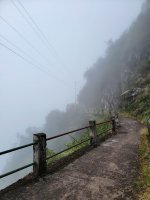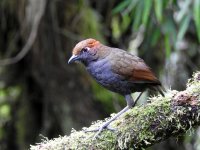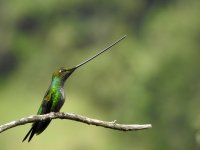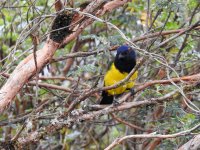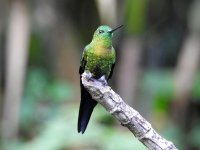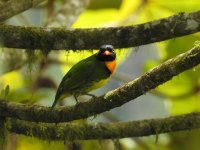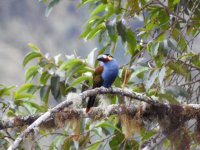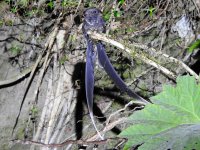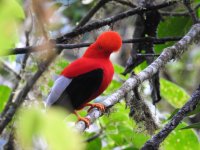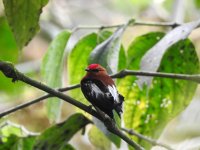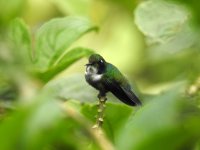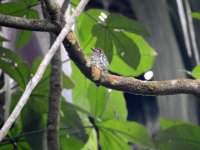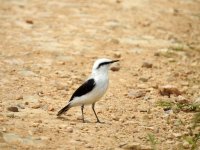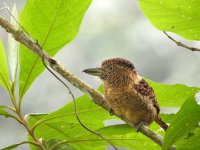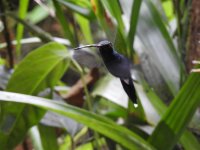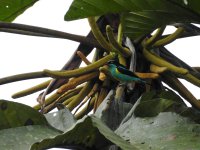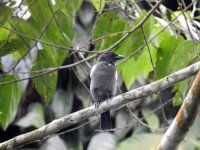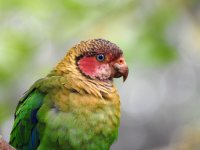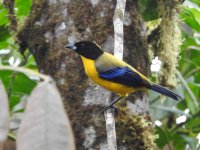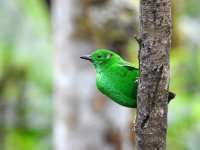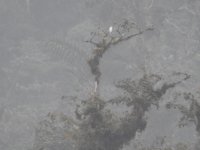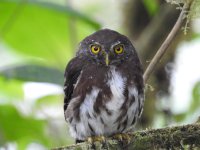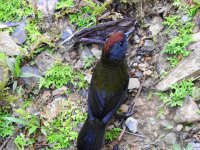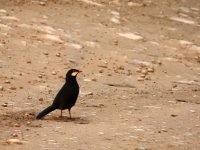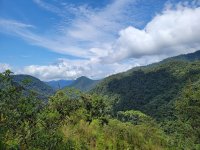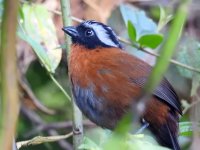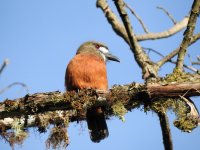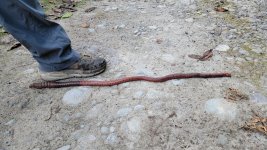lgonz1008
Well-known member

South America is the birding continent, this is something being told by just about every birdwatcher under the sun and it is a goal destination for most. Earlier this year I visited the region for the first time with a 10-day birding trip to Guyana that can only be described as unforgettable due to how close and easy it was to bird the Northern reaches of the Amazon rainforest and the Guianan Shield. However, I wanted to reach the first big milestone of every birder and pass 1,000 species before the year ended, so I booked a flight to Quito and spent 4 and a half days of hardcore birding making sure I reached that goal. Spoilers for all, since I’ve never been to the Andes, I reached the big number in the morning of day 2 and left the country with 235 lifers out of the 331 birds seen, the heard only list boosted the species total to 363. Obviously, in such a short time, I couldn’t get all the targets of the region and I even missed some expected targets, but with seeing 40 species of Hummingbirds, 57 species of Tanager and allies, and point-blank views of 8 of the 11 Antpittas encountered throughout the trip, I can only say it was a success!
Before the detailed itinerary I would like to say that I did use a local guide for logistics, driving and bird ID for the trickier species. The man in question is Nelson Apolo from Ecuador Nature Tours, he’s one of the top guides in the country and one of the best catering to my birding and budgetary needs. Great hearing and seeing skills, that once again reminded me how unprepared I would have been making this trip on my own. If you are ever in the country, reach out to him, his services are worth every penny you can spend in the region.
With that said, I know a number of birders here like to do solo birding and Ecuador is easily one of the best places to do so in South America from a combined front logistics, cost and species count that few countries will rival, it's likely that you'll see more specialties on your own in Ecuador than you would in nearby Colombia and Peru, just from the fact of how used some of these birds are to people even in the dry season, which tend to be the time when the birds are less common in the feeders. But, you will still miss a few key species if you are short on time like I was, since nothing beats local experience.
Detailed Itinerary:
Before the detailed itinerary I would like to say that I did use a local guide for logistics, driving and bird ID for the trickier species. The man in question is Nelson Apolo from Ecuador Nature Tours, he’s one of the top guides in the country and one of the best catering to my birding and budgetary needs. Great hearing and seeing skills, that once again reminded me how unprepared I would have been making this trip on my own. If you are ever in the country, reach out to him, his services are worth every penny you can spend in the region.
With that said, I know a number of birders here like to do solo birding and Ecuador is easily one of the best places to do so in South America from a combined front logistics, cost and species count that few countries will rival, it's likely that you'll see more specialties on your own in Ecuador than you would in nearby Colombia and Peru, just from the fact of how used some of these birds are to people even in the dry season, which tend to be the time when the birds are less common in the feeders. But, you will still miss a few key species if you are short on time like I was, since nothing beats local experience.
Detailed Itinerary:
- October 25-26 (Flight and first day in the high Andes)
I arrived at Ecuador in the middle of the night and emigration was pretty easy to get through, I even got out before my transport to the hotel arrived to pick me up! Once we met up, we took a 20 minute drive to the Zaysant Ecolodge in Puembo, which I couldn’t really see much of or enjoy the amenities since we were out of there by 5AM. Thankfully, the room I got was big and cozy, the hot shower was welcomed after the flight, and if it wasn’t because of an extremely high pitched frog outside my room (could have also been my excitement) I could have taken full advantage and sleep 4 hours, but instead I only got 2 before it was time to get up.
At 5, I got out of my room, met up with Nelson and began driving through Quito to reach our first birding stop on the West Slope, outside of a brief stop for coffee and noticing some garden type birds like Great Thrush, Rufous-collared Sparrow and the only Tropical Mockingbird of the trip, not much else was seen until our first stop on the roadside to Yanacocha. This first stop was overlooking the treeline and soon, we got great views of high elevation targets like Pearled Treerunner, White-banded Tyrannulet, Spectacled Redstart and Blue-backed Conebill. We also began my long saga of hearing but not actually seeing Ocellated Tapaculo.
Moving on from the first stop, we decided to go downhill to a relatively new Reserva Zuro Loma that’s notable for having the only known feeders for Chestnut-naped Antpitta in this part of Ecuador. When arriving to the parking area, we had our boxed breakfast, which was really hard for me to enjoy since there were lifers everywhere (even in the restroom!), from there we were guided to the hummingbird feeders and while Nelson kept reminding me that we were in the low season for feeder activity as most of the birds would be foraging the fruiting flowers and trees in the forests. Nonetheless, the activity was still high from my newbie perspective, with 7 different hummingbirds IDed while sitting down, some of these included Sapphire-vented Puffleg, Buff-winged Starfrontlet, Mountain Velvetbreast and the iconic Sword-billed Hummingbird (this property was actually better to see and photograph this species compared to the more popular Yanacocha. The nearby feeders also brought in Glossy, Black, White-sided and Masked Flowerpiercer, along with Gray-browed and Yellow-breasted Brushfinch, and Blue-capped Tanager.
Eventually, the big show was to begin as we heard the Chestnut-naped Antpitta come in, we sat down and waited for a few brief moments before seeing this beauty out in the open, which offered amazing views (and pictures!) of my first member of this family. Once we had our fill of this Antpitta, we moved to one of the trails where the second Antpitta of the property came in a pair, this was the adorable Equatorial Antpitta, which seems to follow the idea of a ball on stilts by literally jumping all around us while waiting for the worms.
Outside of the feeders and the Antpittas, the property has a third attraction that requires a modest uphill hike to get to, this being a roosting White-throated Screech-Owl, sadly when we got to the site, the bird was not roosting in the area, but we did see a second Chestnut-naped Antpitta as far away as possible from the feeding station. The owl, wasn’t the only dip of the hike as we tried and got very close to seeing a calling Undulated Antpitta, but I would have to take my consolation prize in seeing my first member of the Cotinga family for the trip, Red-crested, the only views I would have of any Tapaculo thanks to a slightly more indulgent Blackish Tapaculo, and enjoying a mobbing flock that included Yellow-bellied and Rufous-breasted Chat-Tyrant, Black-crested and Russet-crowned Warbler, and a trio of Cinereous Conebills. On the drive out, we scanned the nearby cattle pens to eventually connect with a pair of Andean Lapwings and the first raptor of the trip in an American Kestrel.
We arrived in Reserva Yanacocha little after 11 and while Nelson notified the staff to prepare us lunch, I enjoyed the feeder activity that included the only views of Great Sapphirewing and Shining Sunbeam for the trip. From there, we did a short walk around the Paramo area where we had a pair of singing Grass Wren, brief views of Tawny Antpitta, and the only mammal sighting of the day with an Andean Rabbit. On the fruit feeders, we also enjoyed a pair of Black-chested Mountain Tanager and after a delicious hot lunch, we went down the trail as the fog creeped up the mountain.
The foggy trail was a fun test for someone with mild vertigo, but overall, it was more disappointing, and worrying, that we couldn’t enjoy or see most of our targets. A total of 7 Ocellated Tapaculos were heard but none to be seen, we also briefly connected with a Tyrannulet trio in the forms of White-banded, White-throated and Black-Capped Tyrannulet, plus a small family of Crowned Chat-Tyrant. The only members of the Cracidae family were seen as a pair of Andean Guan flew down the mountain in front of us, and luck would dictate that I had my bins up just as a pair of Barred Fruiteaters briefly flew across my view in the fog.
Eventually we arrived at our destination about 2km into the trail. This was another hummingbird feeder station, but this one was necessary to connect with Golden-breasted Puffleg, which rarely show up in the feeders by the entrance of the reserve. Together with this lonesome Puffleg, we also enjoyed the antics of an Equatorial Antpitta that was moving around our feet while foraging, a skulkier Rufous Wren in the understory and a size chart difference between Buff-breasted, Scarlet-bellied and Hooded Mountain Tanager. Eventually, the sandflies forced us to leave these feeders and we walked back towards our car with a much clearer view of the valley as the fog had dissipated.
From there, it was a long drive towards Mindo, with roadside stops giving us views of Short-tailed and Roadside Hawk, Black Phoebe, White-tipped Dove and a small mixed flock that included my first boreal migrant in the form of Blackburnian Warbler, alongside some local species like Fawn-breasted Tanager, Rusty-winged Barbtail, Golden-rumped Euphonia and Glossy-black Thrush. We could hear an Andean Cock-of-the-rock lek while driving through the Tandayapa Valley, that gave us a prelude for what would come tomorrow, but today, we arrived in Mindo after enjoying a beautiful sunset, had dinner in the restaurant of choice when in town and by 9PM, I was already in bed and ready for an early start tomorrow.




